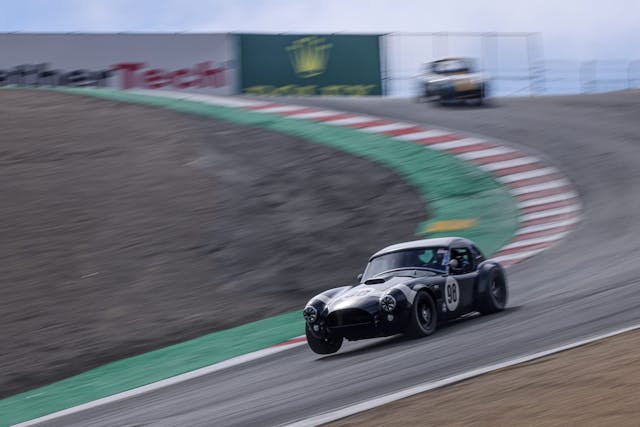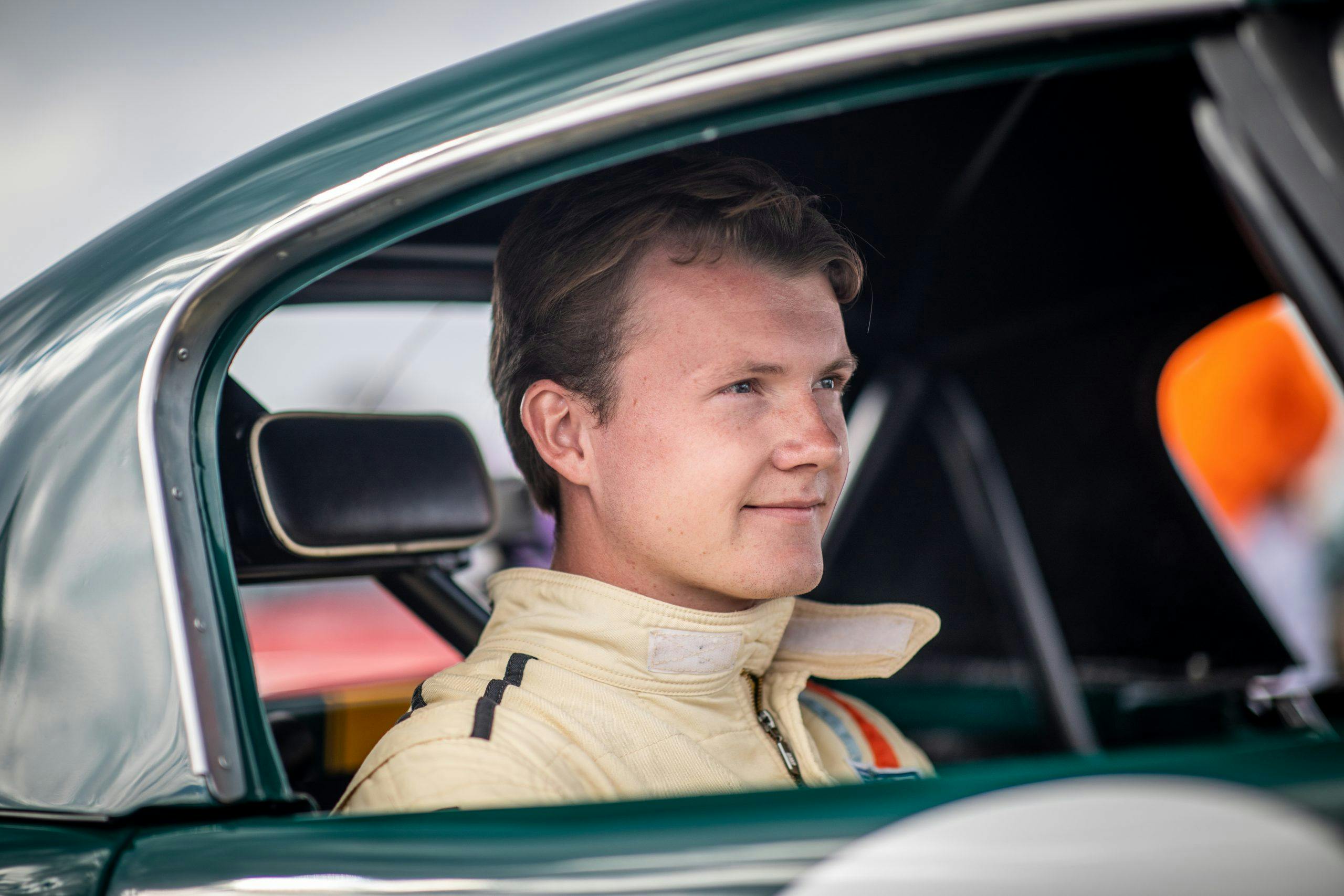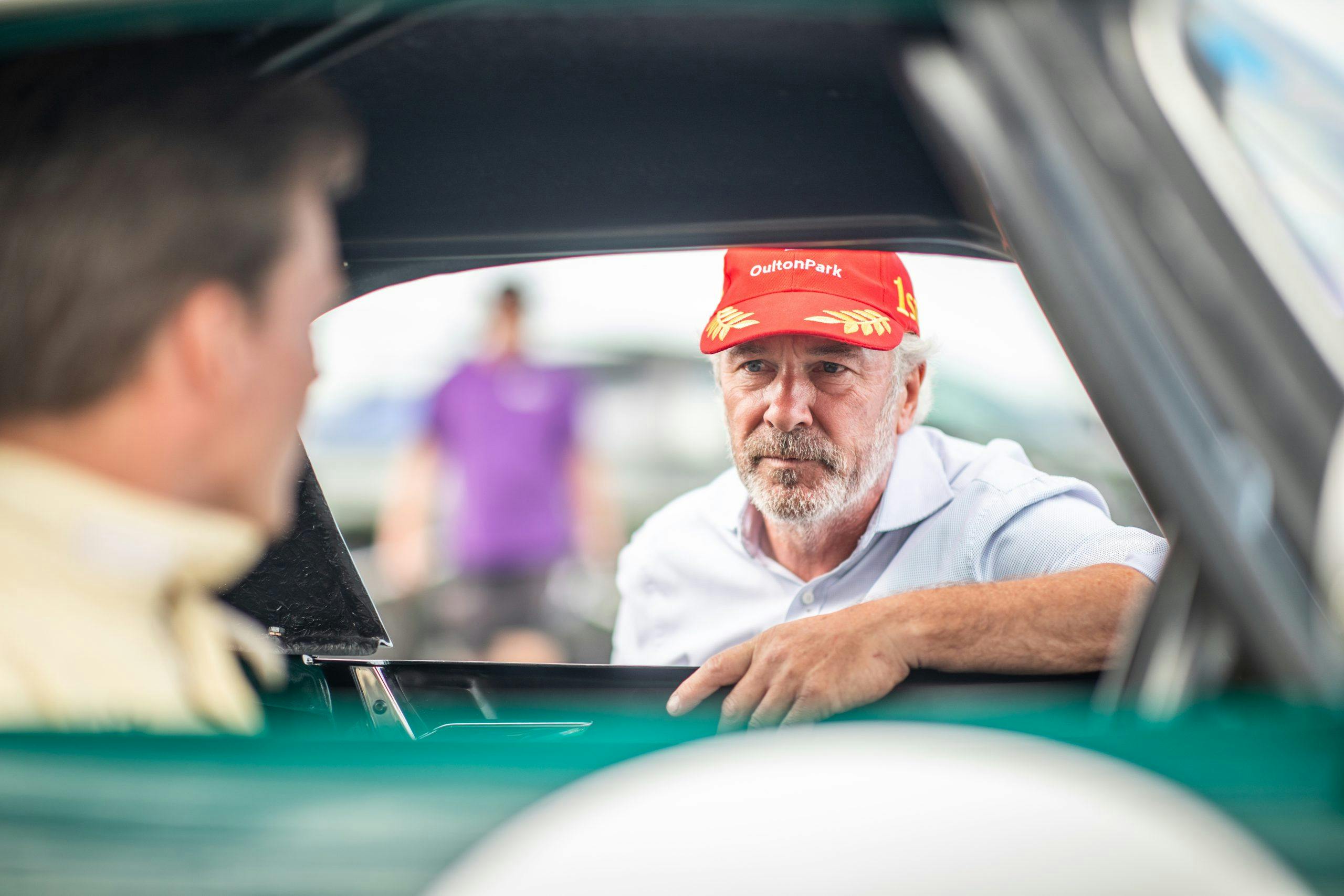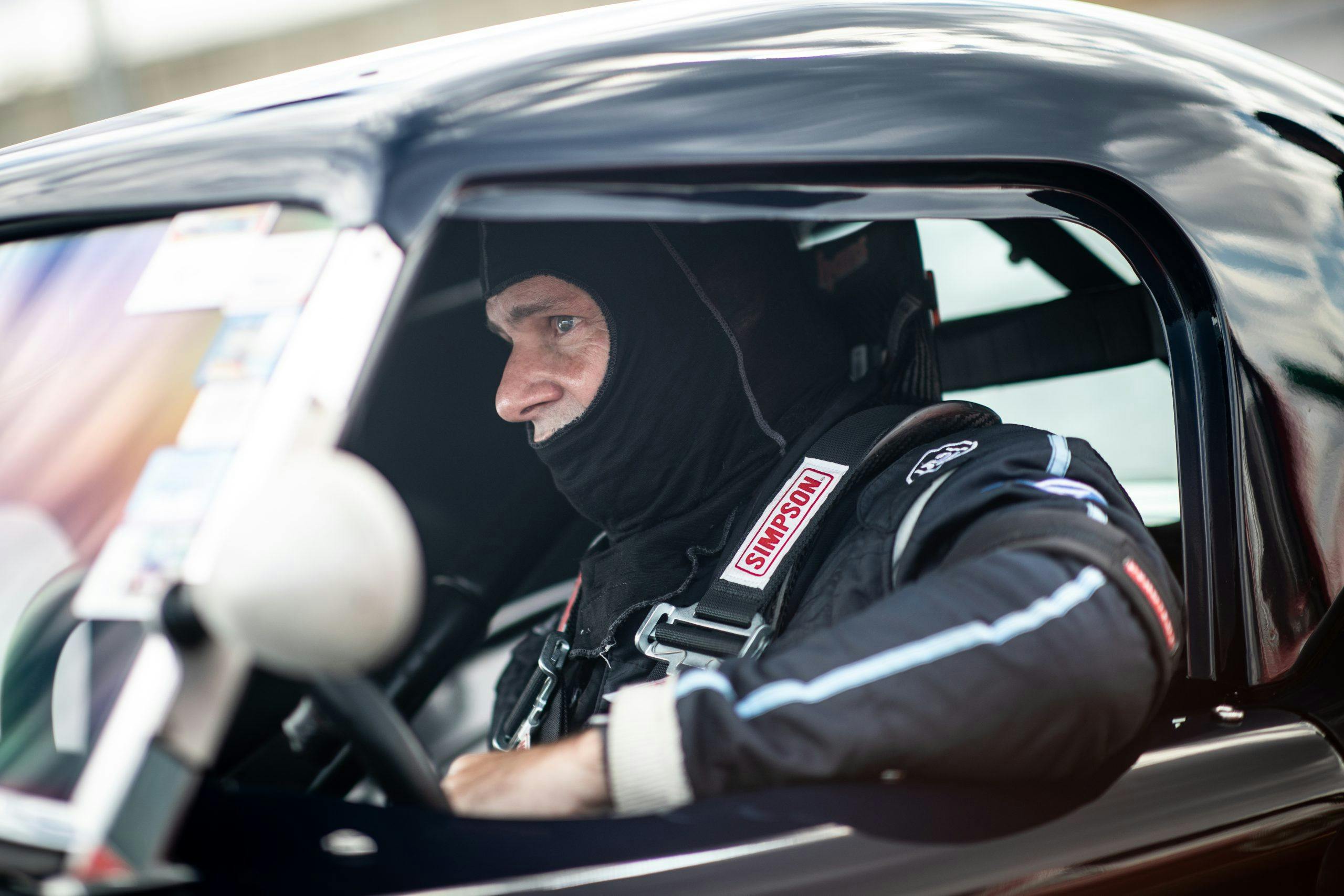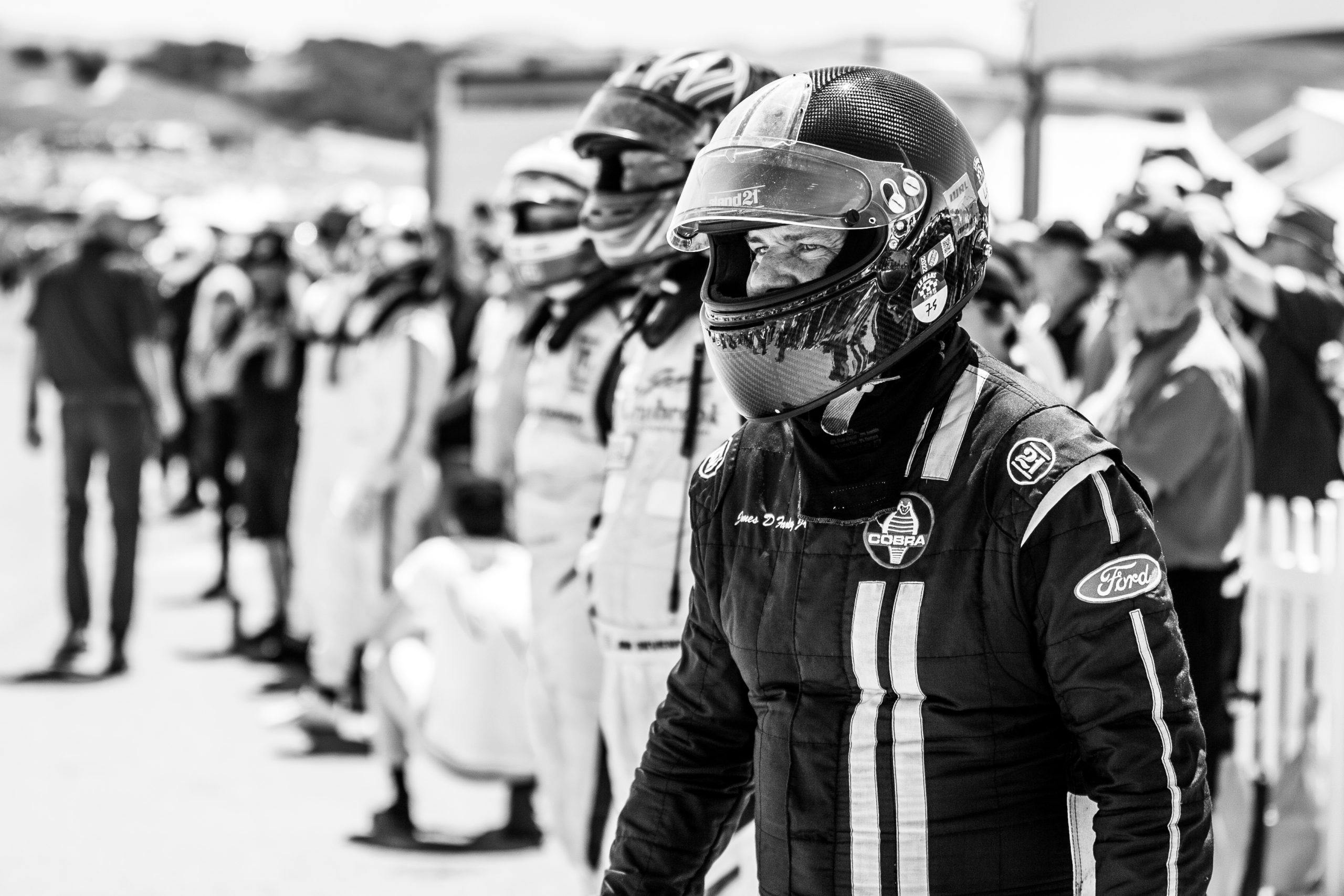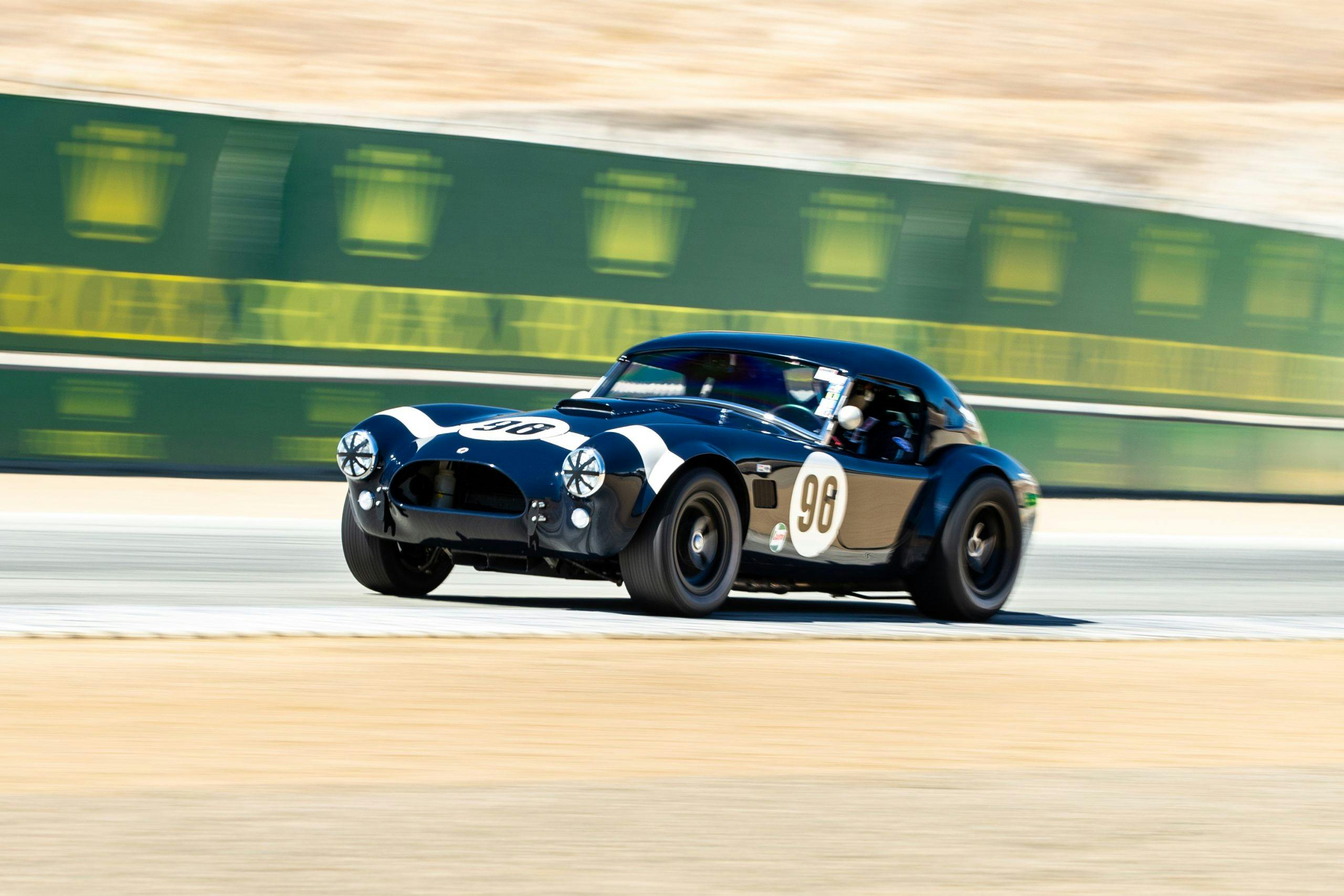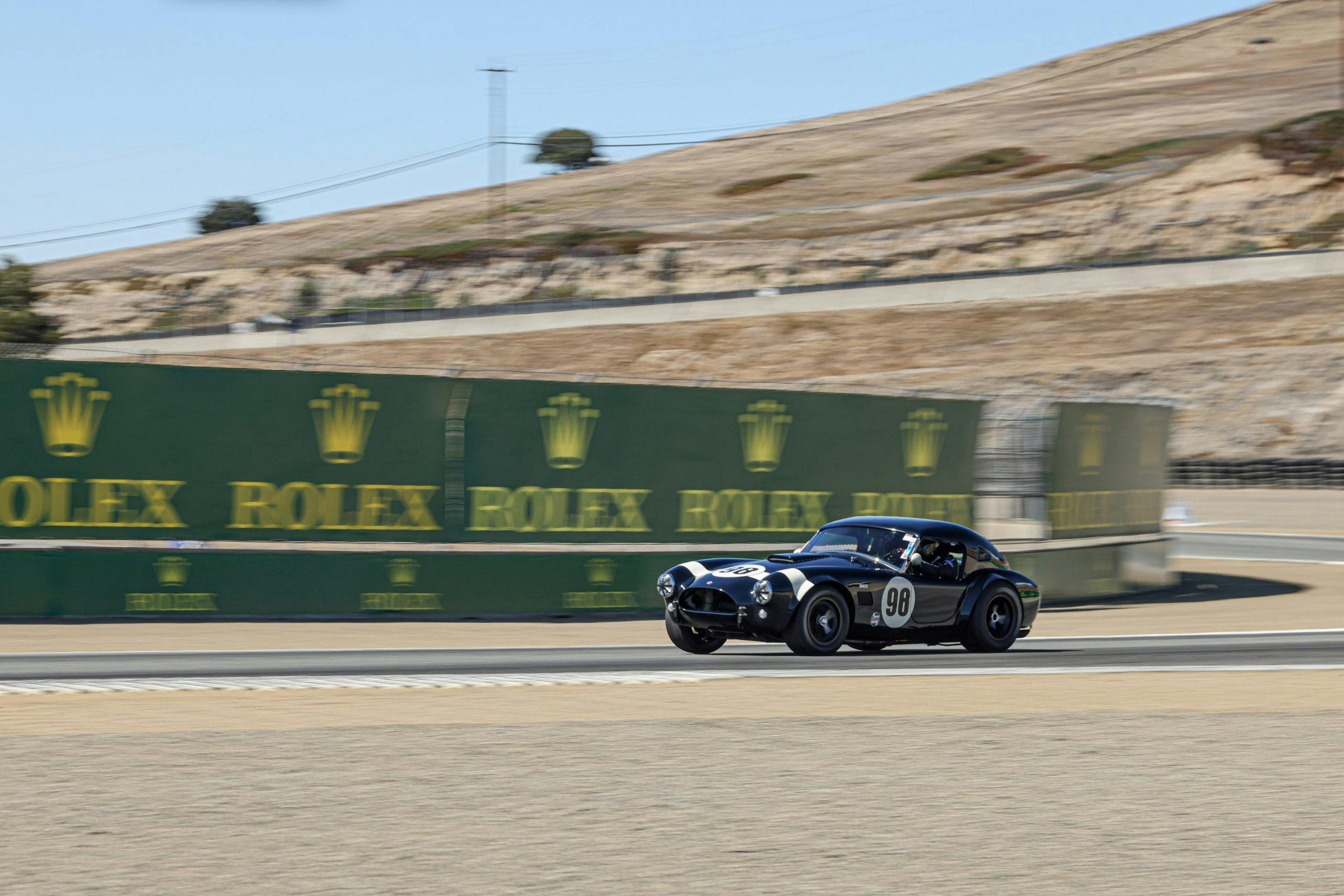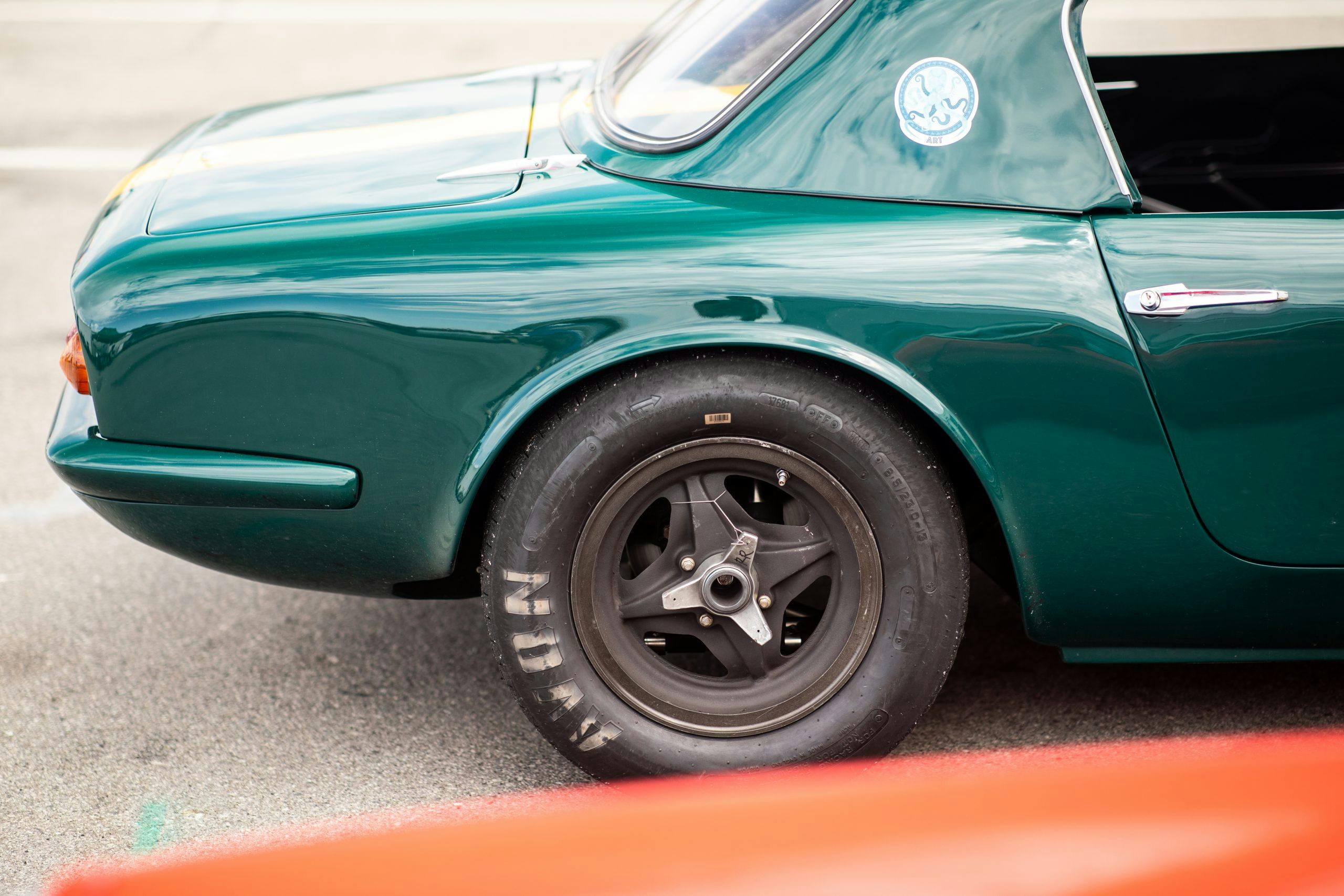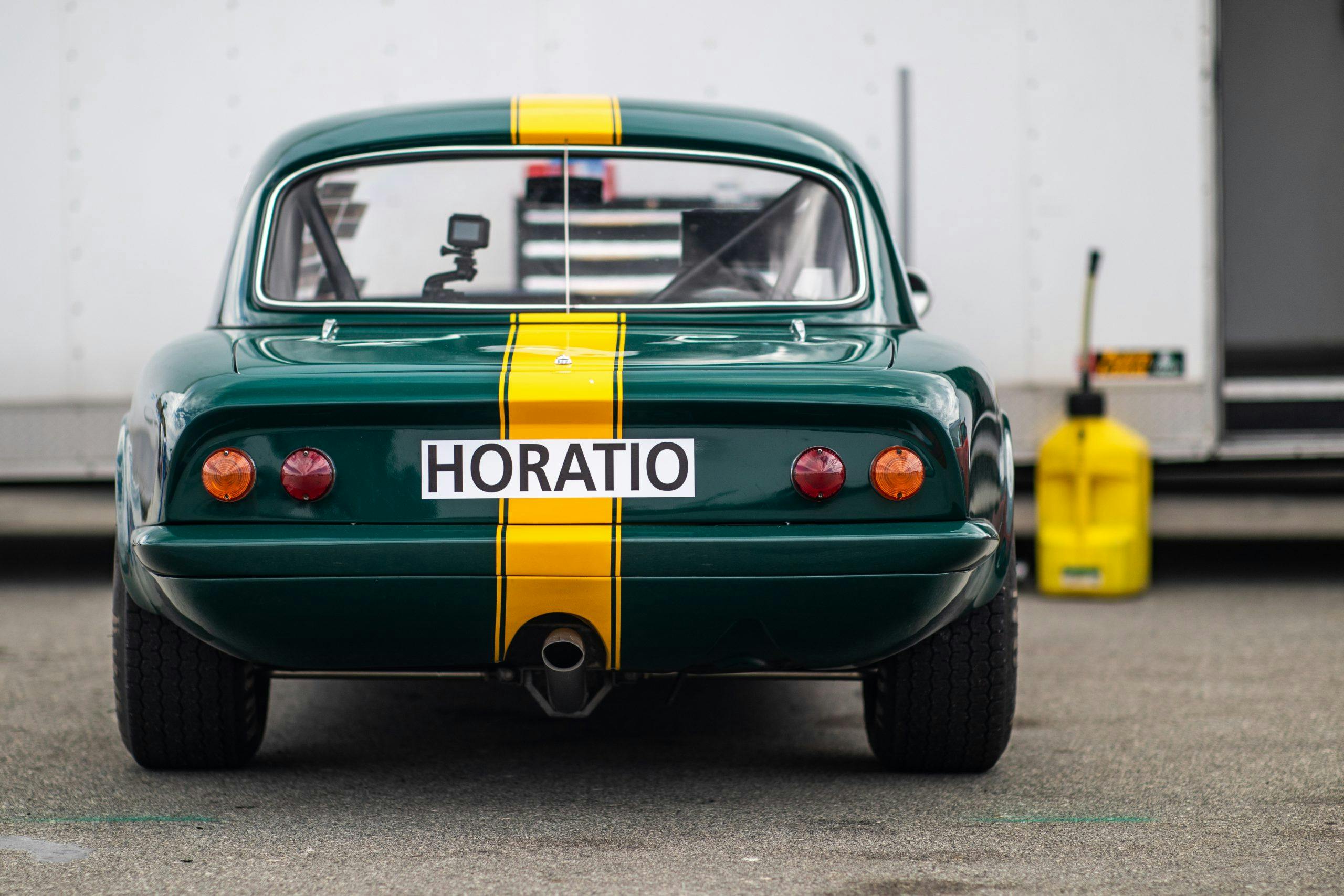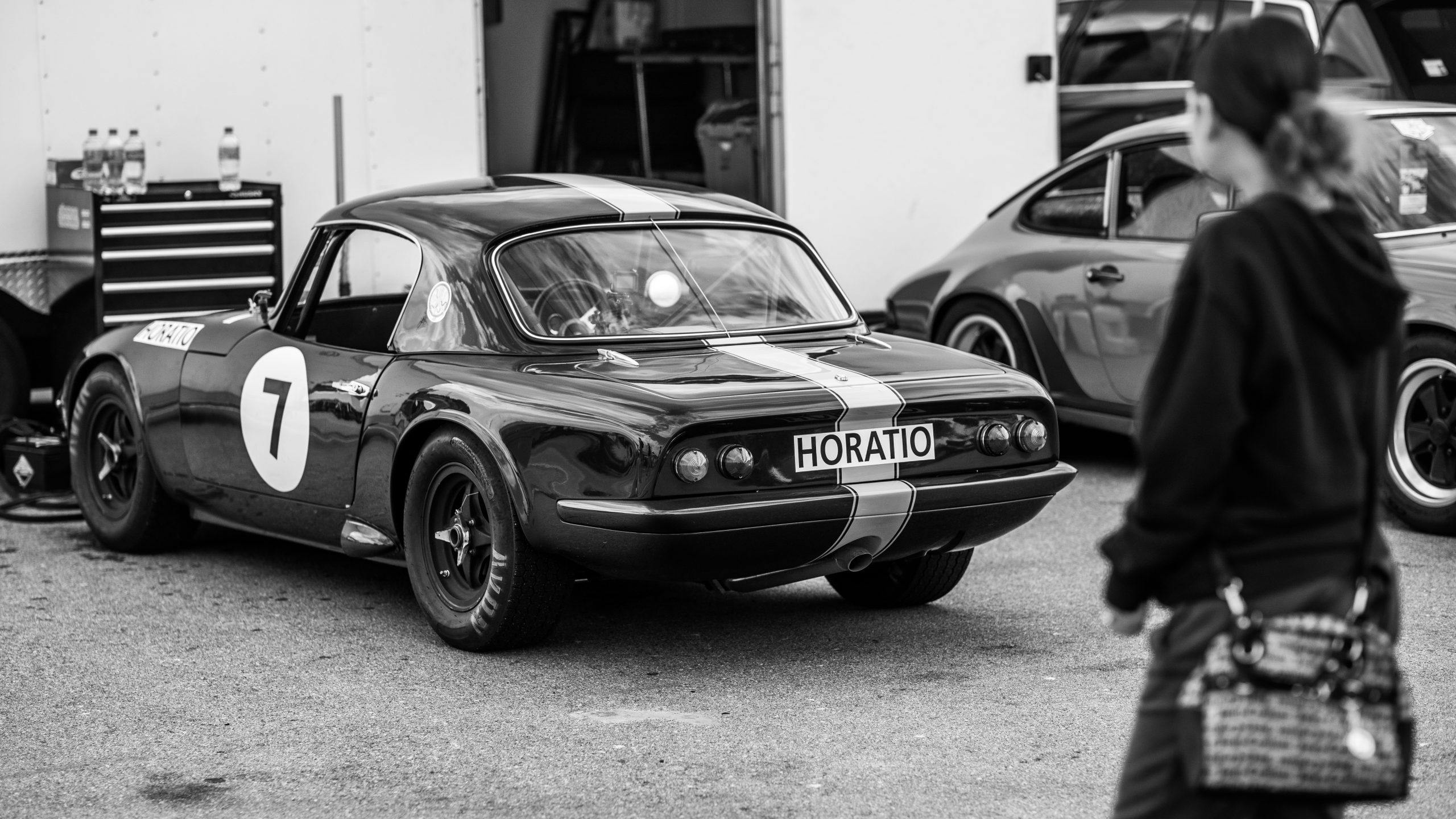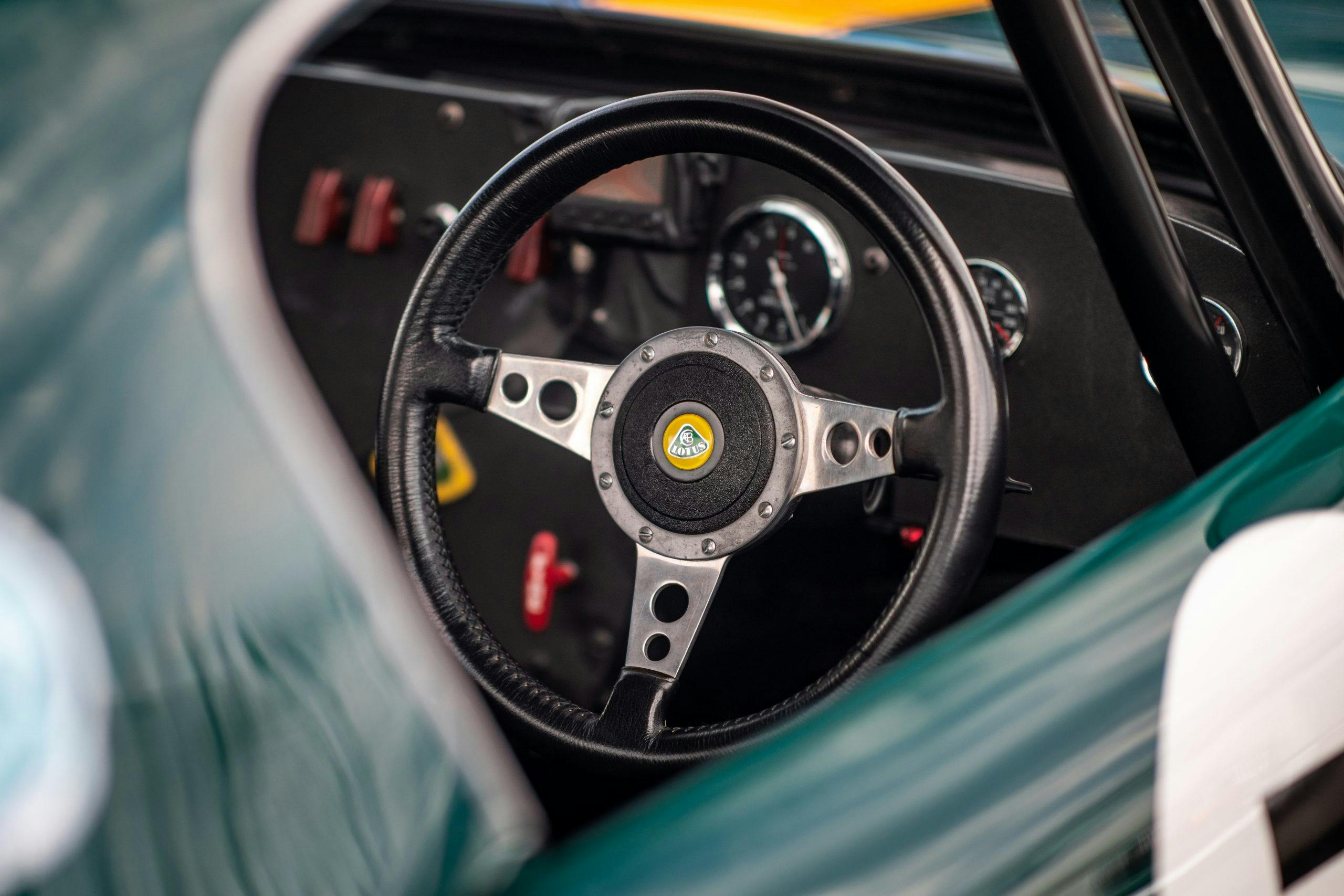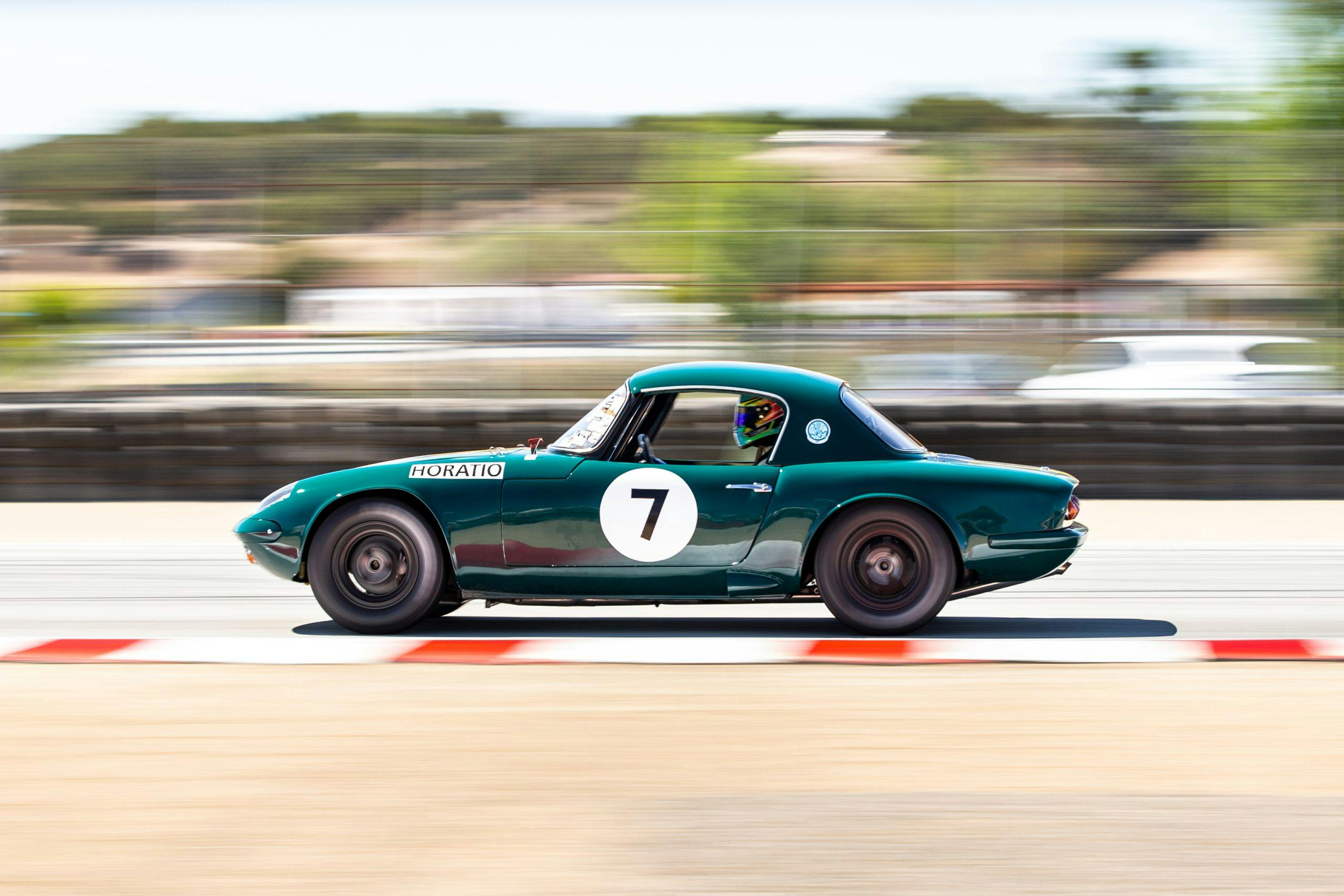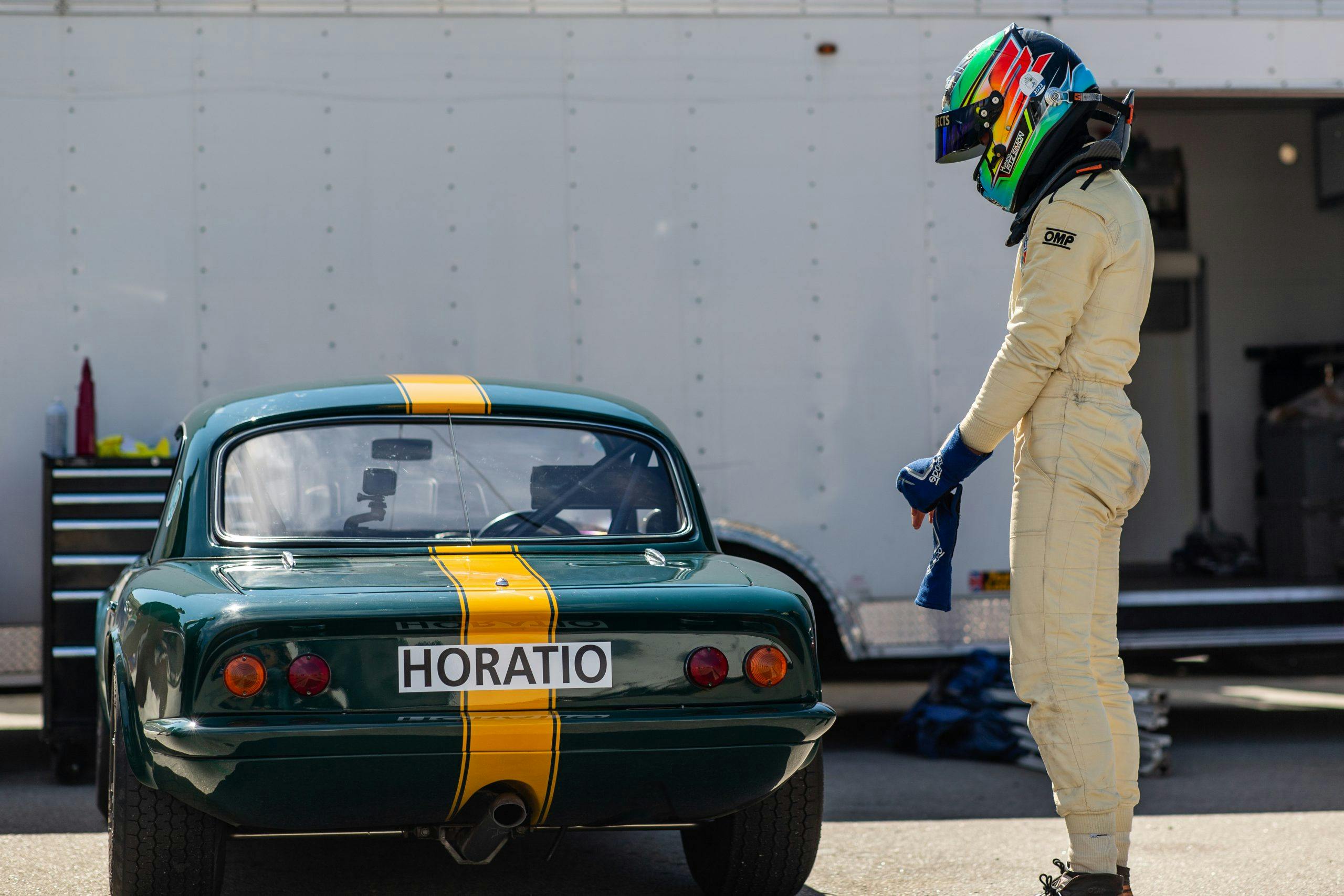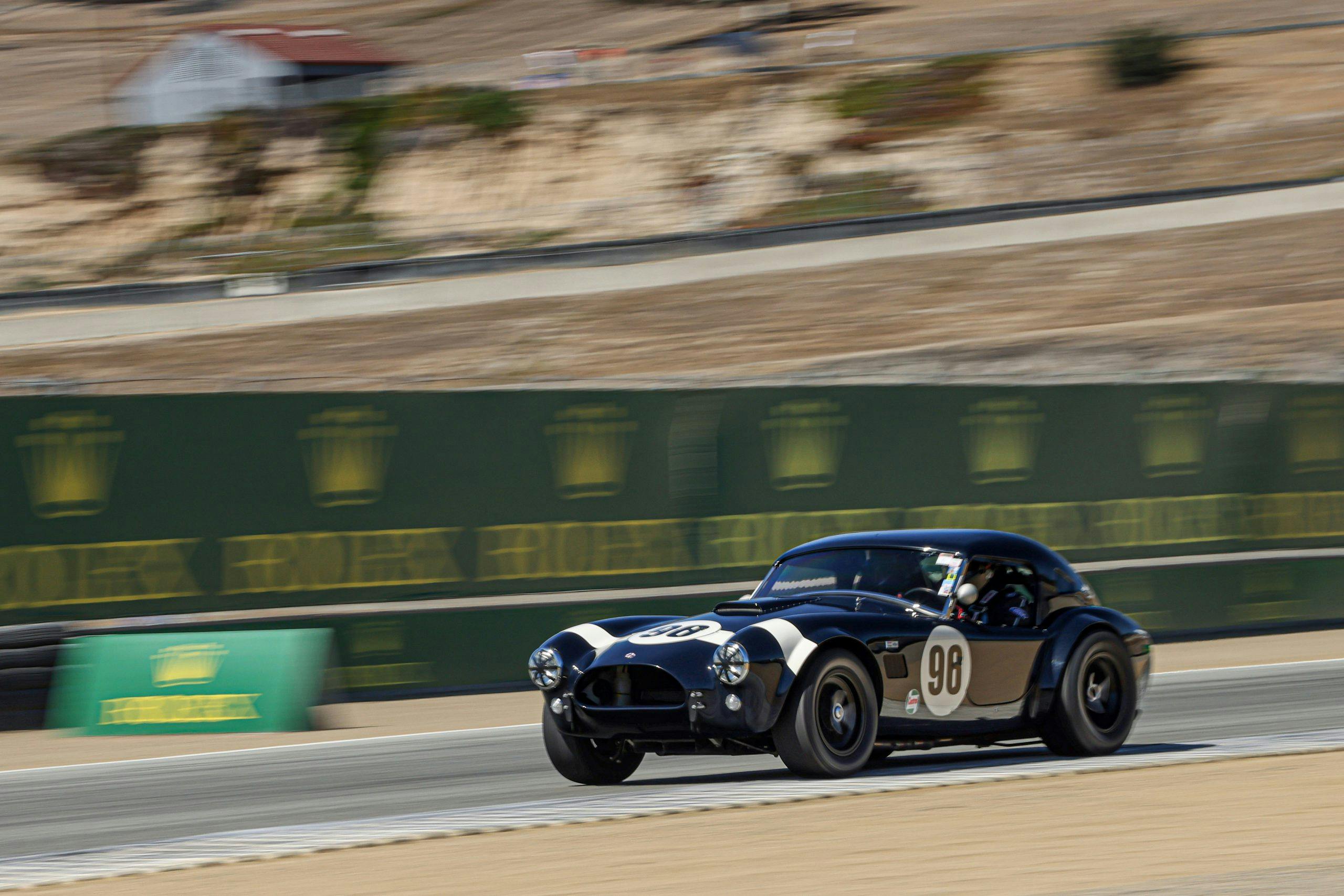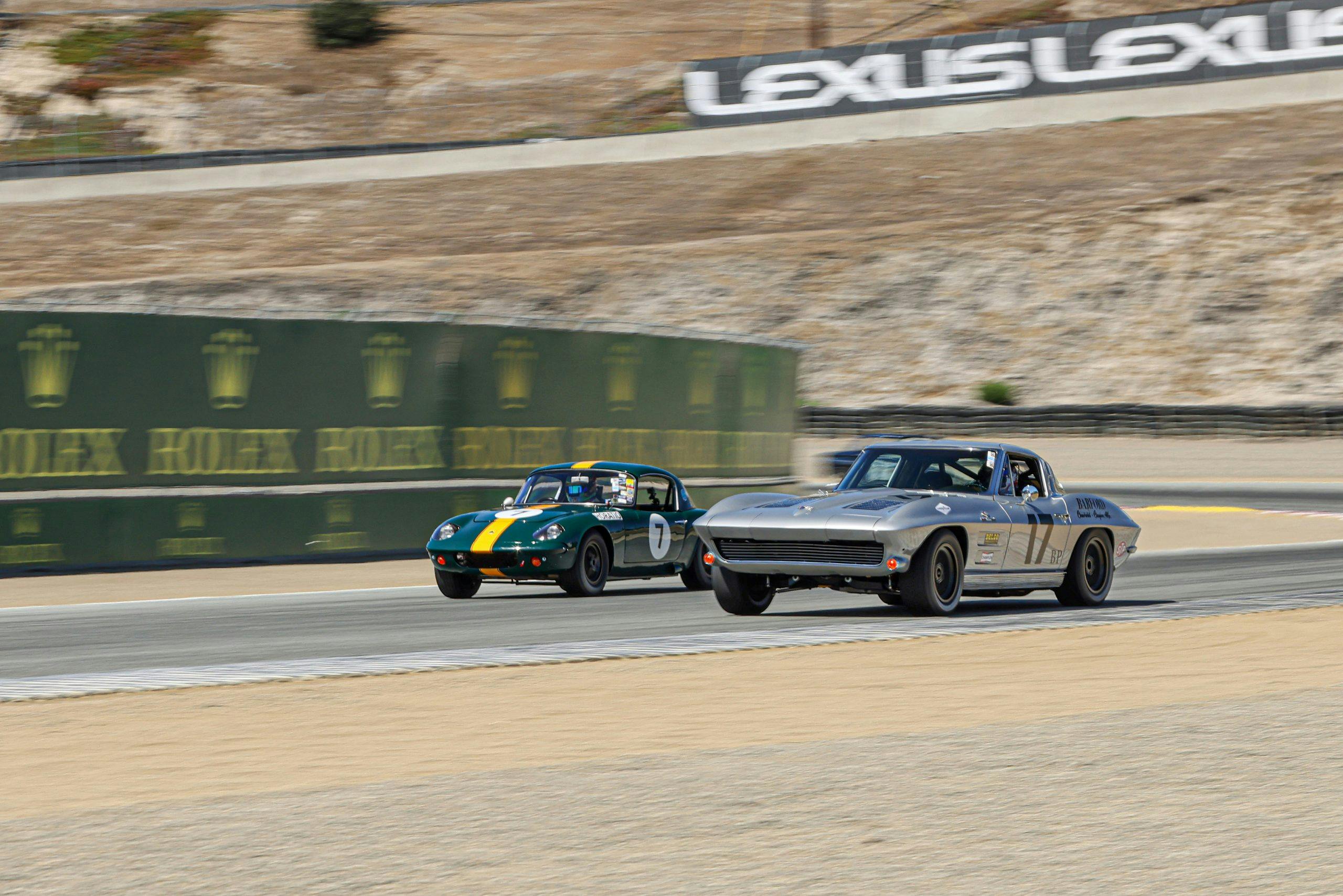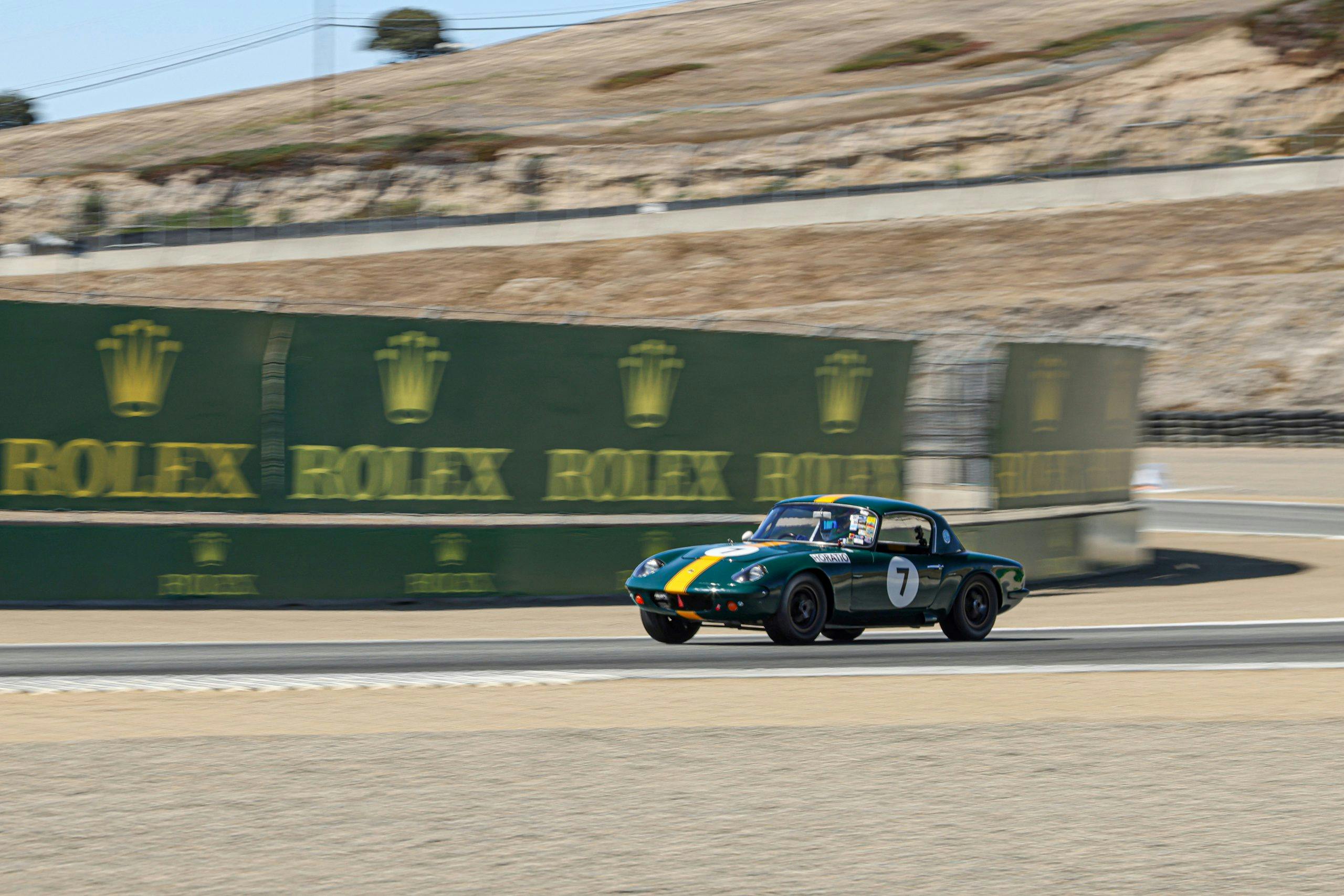Photo recap: The best battle from the Rolex Monterey Motorsports Reunion
While some of the classes that hit the track at Rolex Monterey Motorsports Reunion are racing for actual points, like the fan favorite ’66-’72 Trans Am group, some of the best racing occurred in the less-formal Group 4 run class. This group is typically more subdued than the big-bodied muscle cars because of the inherent disparity in the class, which features 1955-1966 SCCA production cars. A wide variety of import and domestic racers poured out of the paddock and onto WeatherTech Raceway Laguna Seca for Saturday’s feature event. The roster included Corvettes, Shelby Mustangs, Porsche 911s, an Austin-Healey, one Corvair, and two frontrunners aboard two widely different rides. This duo, a 289 Cobra piloted by Ford boss Jim Farley and a Lotus Elan 26R driven by Horatio Fitz-Simon, put on the best show of the weekend.
Farley led the pack in his small-block, hard-top Cobra, but Fitz-Simon kept the lightweight Lotus on the razor’s edge of its tires’ grip through the corners, catching the bigger, more powerful Cobra in the turns. Every lap, we watched the Lotus slide through Laguna’s third turn, perfectly balanced and seemingly on the brink of losing control. Midway through the 25-minute race, Fitz-Simon managed to squeeze by Farley. Once passed, the Ford remained glued to the Lotus’ toothpick-sized rear bumper. Fitz-Simon told us that Philip Kadoorie, who was piloting a silver hardtop Cobra and had battled the Lotus the day before, proposed that “whoever led through the corkscrew on the final lap would be the winner, and that the three of us would slow down and cross the finish in Le Mans style.” Farley, charging out of the final turn, passed the slowed Lotus momentarily before they could regroup, but Fitz-Simon took the checkered flag with the Cobras just behind.

Fans took to the pits following the race to admire Fitz-Simon’s compact Lotus. When we asked him about his ride, he showed us just how lightweight the Elan really was, easily distorting its bodywork with a light press of his finger. That’s a pretty solid demonstration of Colin Chapman’s philosophy of “simplify and add lightness”.
Trading paint is not going to win you any points among fellow racers, so there’s surely an extra level of caution when racing historic cars, making passing even more difficult than usual. Of course, we’d still show up to see these machines driven at eight-tenths, but when skilled drivers like this duo put on a show, it makes the Rolex Monterey Motorsports Reunion even more worthwhile.
Check out the Hagerty Media homepage so you don’t miss a single story, or better yet, bookmark it.
